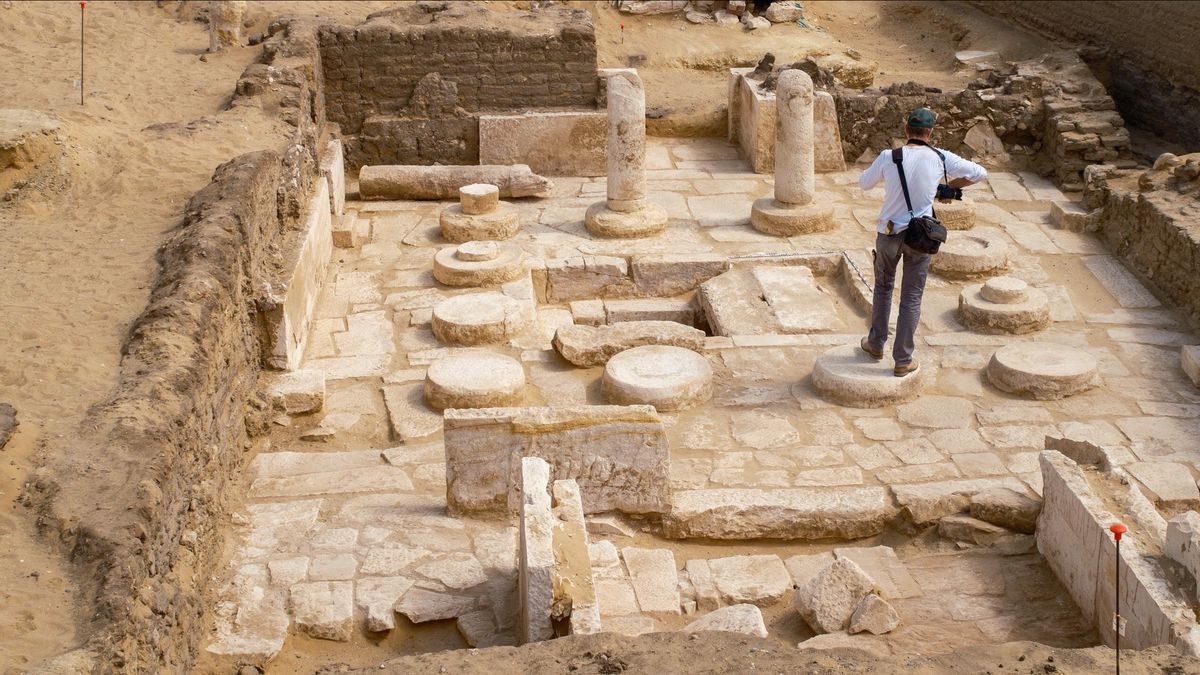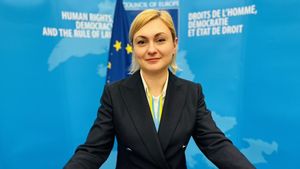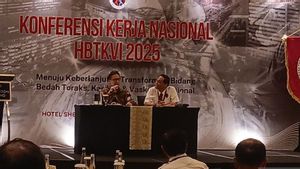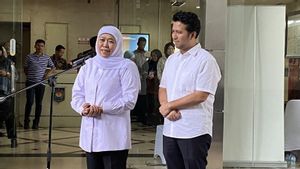JAKARTA - The ancient underground tomb complex of Pastrangesy and the four chapels has been found in Saqqara, the Egyptian Ministry of Tourism and Antiquities said.
Pastrangesy served as administrator of the Amun temple during the first half of the reign ofvises II, around 1250 BC.
This finding helps explain the development of the Saqqara cemetery during the previously unknown period of Ramesside and historical figures, said Secretary General of the Highest Council, Mostafa Waziri.
A joint Dutch-Italy archaeological mission from the National Museum of Antiquities at Leiden and the Egyptian Museum (Museo Egizio) in Turin, along with Egypt's Ancient Highest Council, made discoveries during its latest excavation.
Saqqara, which is located about 30 kilometers south of the modern city of Cairo, is the burial of the ancient city of Memphis in Egypt.
An international research team gathered to work on the site from February 19 to March 24. Meanwhile, the Dutch National Antiquities Museum has been conducting research and excavations in Saqqara since 1975. Museo Egizio joined the project in 2015.
The Dutch-Italian archaeological mission from the Leiden Museum in the Netherlands and the Egyptian Museum in Turin, working in the Saqqara antiquities area under the supervision of the Supreme Council of Antiquities, succeeded in discovering a tomb of a person named Panehsy. pic.twitter.com/dVcdH8TGAp
— Ministry of Tourism and Antiquities (@TourismandAntiq) April 13, 2023
The Dutch-Italian archaeological mission from the Leiden Museum in the Netherlands and the Egyptian Museum in Turin, working in the Saqqara antiquities area under the supervision of the Supreme Council of Antiquities, successfully in revealing a tomb of a person named Pastrangesy. pic.twitter.com/dVcdH8TGap
After being absent for two years due to the COVID-19 pandemic, the team returned to their activities in September last year.
Archaeologists excavated a monumental tomb superstructure - the entrance has been discovered in 2019 - during the autumn mission and the first half of the current season. They are also exploring the east of the tomb.
The mission was led by Christian Greco, director of Museo Egizio, and Lara Weiss, curator of Egyptian and Nubia collections at the museum in Leiden.
"For us this is very interesting, because we have been digging in this area for a long time and with every new discovery, we better understand the lives of the ancient Egyptian people there and how they used the site," Weiss told The National News as quoted on May 1.
The Pastrangesy rectangular complex measures 13.4 times 8.2 meters and is located north of the famous Maya Tribe grave, a top official from the Tutankhamun era around 1296 BC.
The cemetery has a gate entrance, an inner courtyard containing the base of a stone pole and axis leading to an underground cemetery.
A small room that enters from the bottom of the axis provides access to the second axis measuring a depth of five meters. Then go to the cemetery which is located at a depth of 16 meters below the tomb floor.
The wall of the mud brick at the top of the tomb stands about 1.5 meters high and is decorated with reliefs. One shows Pastrangesy and his wife Baia, who is singer Amun, along with several priests and presenters.
The name Pastrangesy, which means "the people of Nubia", was relatively common at that time. However, this special servant from Memphis is not known by scholars until now.
In the eastern area of the tomb, the Leiden-Turin expedition team found four smaller grave chapels. One of them is Yuyu, the maker of the gold sheet from the firaun treasury.
The Yuyu Chapel measures only about one square meter, but the quality and detail of the wall decorations are stunning, Weiss said.
The four generations of Yuyu's family are respected with colorful reliefs that show their burial procession and the rise of their mummies to live in the afterlife, as well as the worship of the Hetor cattle and the local Sokar Saqqara god ship.
Meanwhile, the two doorposts of the same chapel have been a collection of Musee de Picardie in Amiens, France, since 1927.
The second Chapel contains a rare carving inscription from the owner of the tomb, unknown, and his family.
The remains of the other two chapels do not have an inscription and are found to be in unpreserved condition properly.
The project is funded by two museums, the Dutch Research Council, the Netherlands-based Friends of Saqqara Foundation, and grants from private donors. An archaeological mission will resume work on the spot within about a year.
"Today we have a much broader understanding, than when we started in the 1970s and we want to really have a broad understanding of the Saqqara as a whole, from the early period of dynastics to the end of the Greek-Romawi period," Weiss concluded.
So far, Egypt has uncovered several major archaeological discoveries in recent years, mostly in the Saqqara cemetery.
The English, Chinese, Japanese, Arabic, and French versions are automatically generated by the AI. So there may still be inaccuracies in translating, please always see Indonesian as our main language. (system supported by DigitalSiber.id)













